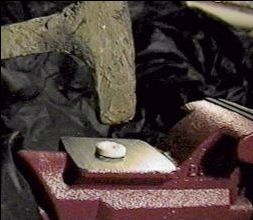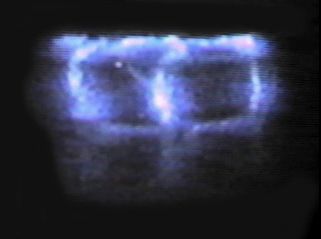A page from the "Causes of Color" exhibit...
Can we make lightning in candy?



Crushing a lifesaver candy in darkness reveals light emission because of triboluminescence.
Triboluminescence
An unusual example of gas excitation is found in triboluminescence, seen when we crunch a Wint-O-Green Life Saver candy in front of a mirror in the dark. Triboluminescence translates as light from friction. In a miniaturized version of the effect of lightning, gas excitation of nitrogen in the air produces a blue-white light.
As we chomp on the candy, areas of positive and negative charge are formed in the sugar crystal. When a high enough potential difference is created, electrons jump across the fractures in the crystal. They collide with nitrogen gas molecules in the air. In turn, these are excited to produce positively charged nitrogen ions, which produce a blue luminescence. Some ultraviolet is also produced, and causes the oil of wintergreen (methyl salicylate) to fluoresce with a particularly intense blue-light production.
Other examples of triboluminescence are seen in diamonds, which sometimes emit light during the polishing process, and when separating certain "sticky" surfaces, such as band-aid wrappers or postal envelopes.



